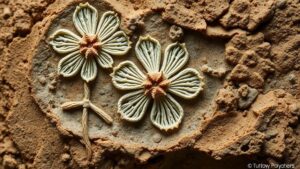Discovering malachite deposits in the Congo, their vivid green hues tied to ancient cultures.
Discovering Malachite Deposits in the Congo
Malachite, known for its striking green hues, is a copper carbonate mineral that has captivated the attention of not only jewelers and artisans but also rockhounds and mineral collectors worldwide. The Democratic Republic of the Congo (DRC) is one of the most significant sources of this mineral, boasting vibrant deposits that have deep ties to both ancient cultures and contemporary craftsmanship.
The Geological Formation of Malachite
Malachite forms through the oxidation of copper ore deposits. It is typically found in the upper oxidized zones of copper-bearing deposits. DRCs unique geological formation, particularly in regions with rich copper deposits, could be considered analogous to a treasure chest where malachite is one of the most vibrant gems. Geologists classify malachite as part of the carbonate family, with a chemical formula of Cu2CO3(OH)2 and a hardness of 3.5 to 4 on the Mohs scale, making it relatively easy to work with for collector items and jewelry.
Cultural Significance of Malachite
Historically, malachite has been associated with various ancient cultures, particularly in Africa. The ancient Egyptians utilized malachite as an ornamental gemstone and crushed it to create eye makeup known as kohl. This not only protected their eyes from sun glare but also was believed to ward off evil spirits. In the Congo, malachite was more than just a decorative stone; it held spiritual significance and was often used in rituals and as currency.
Today, mineral collectors and rockhounds flock to the DRC, where malachite deposits are not only abundant but also rich in artistic and historical legacy. The country produces malachite in various forms, including stalactitic, botryoidal, and massive varieties. Statistically, the DRC contributes approximately 60% of the world’s supply of malachite. This makes it essential for collectors to understand the intricacies involved in mining, distribution, and preservation of this mineral.
Identifying Quality Malachite
For rockhounds looking to add malachite to their collection, identifying a quality piece is crucial. When evaluating malachite, collectors should consider:
- Color: High-quality malachite exhibits a vivid green hue, often with banding patterns or marbling.
- Texture: It should have a smooth finish with a slight sheen. Matte surfaces can indicate lower quality.
- Weight: Malachite is relatively heavy; lighter pieces may be a sign of resin treatment.
Practical Tips for Collectors
For those venturing into malachite collection, consider the following practical tips:
- Research Local Sources: Understanding the mining regions can provide insights into quality and authenticity.
- Invest in Certification: When purchasing high-value pieces, always seek documentation proving authenticity.
- Care and Maintenance: Malachite is sensitive to acids and can tarnish if not properly cared for. Use mild soap and avoid ultrasonic cleaners.
The Future of Malachite in Craftsmanship
As interest in sustainable and ethically sourced materials grows, the demand for natural malachite is likely to increase. Artisans in the DRC are beginning to modernize their craftsmanship, producing not just jewelry but also art pieces that honor traditional methods while appealing to contemporary aesthetics. This evolution presents a unique opportunity for collectors to own not just a mineral, but a piece of living heritage.
Conclusion
Malachite deposits in the DRC offer a vivid blend of natural beauty and rich cultural history, making the mineral a coveted choice for collectors and rockhounds alike. When navigating this sector, a balance of knowledge about geological characteristics, cultural importance, and modern practices will reward collectors with unique and meaningful additions to their collections. By appreciating the unique qualities of malachite, collectors can ensure they engage responsibly and enrich their understanding of this fascinating mineral.



